This post may contain affiliate links. Please see our disclosure policy.
Home-canned soup is a must-have in my pantry for busy evenings and sick days!
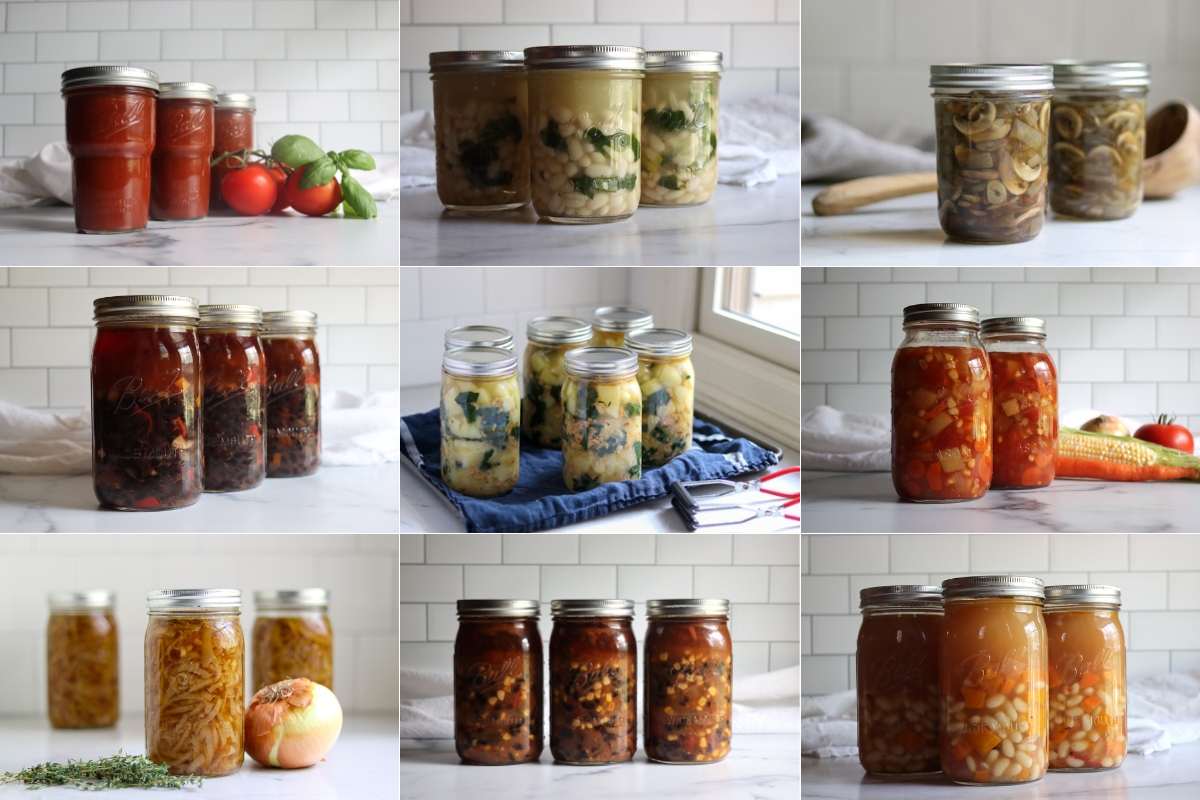
If you’re anything like me, you probably got started canning extra vegetables from the garden. It’s a great way to preserve your extra produce for winter without relying on a freezer to keep it cold. However, these vegetables still need a bit more effort to make a meal. That’s why I also like to include some soup in my pantry.
Home-canned soup takes little effort to open, heat, and enjoy. They may not help me make big fancy meals, but they fill everyone with nourishing, tasty food when the family is stretched thin or under the weather.
I highly prefer these home-canned soups to store-bought canned soup. Store-bought soup is rarely very filling and contains high levels of sodium. The cans they come in are typically lined with plastic, and about 10% of them still contain BPA.
When canning soup at home, you can ensure that the soup is made with high-quality ingredients, such as vegetables from your garden or farmer’s market, meat from your homestead or hunt, and fresh spices and herbs.
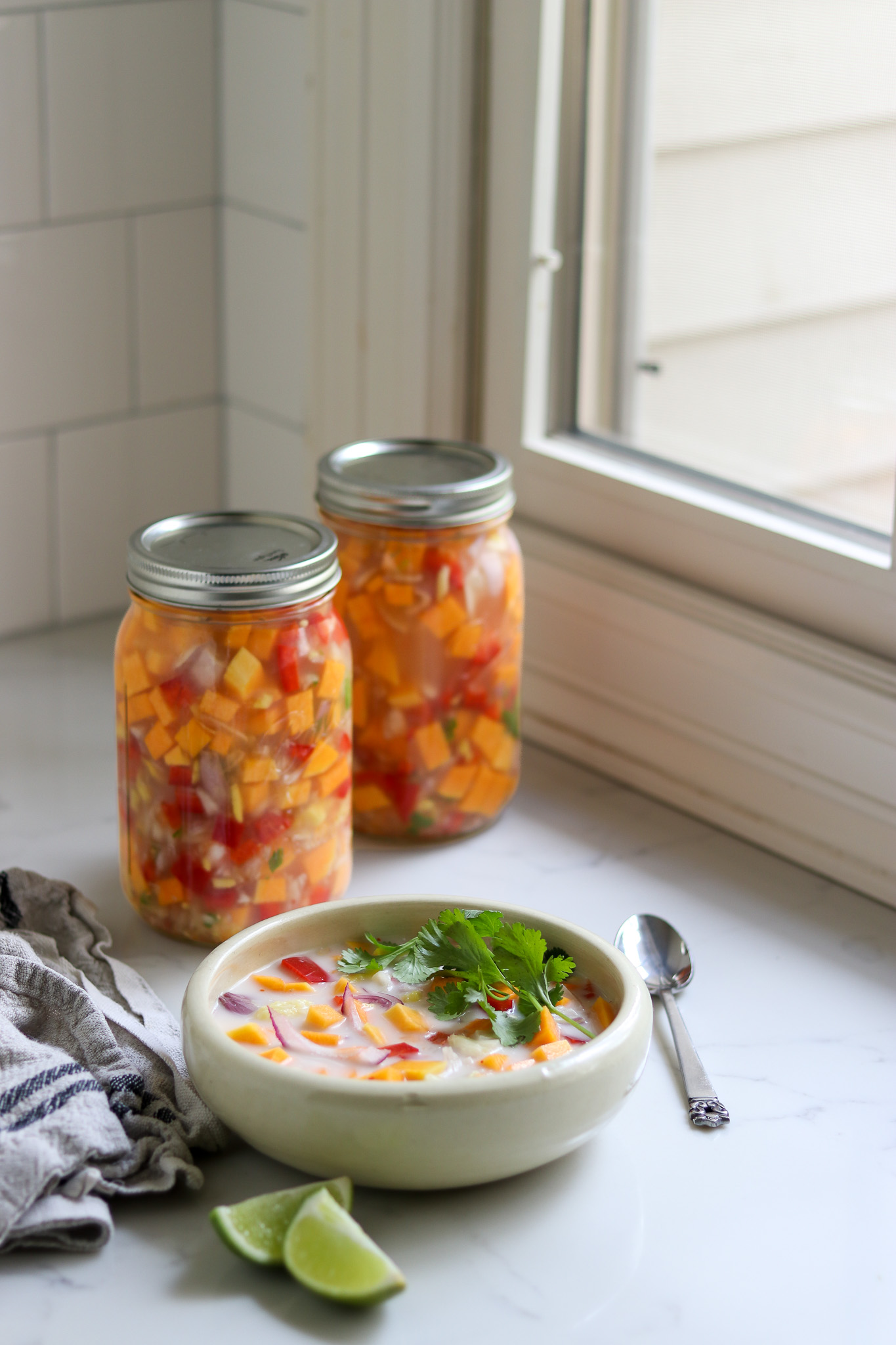
Pressure Canning Soup
Keep in mind that soup must be pressure-canned. Unlike the pickles and jam you may already have experience with water bath canning, soup ingredients are low-acid foods. This means their pH is too high to be safe for water bath canning. A pressure canner can cook at significantly higher temperatures, killing bacteria in these low-acid foods.
I use the 30-quart All-American canner and can’t recommend it enough. It was quite the investment for our homestead, but it’s easy to use and incredibly durable. I expect it will be around and fully operational long after I’m gone.
If you’re not ready to make an investment like that, you can also try a more affordable Presto pressure canner. After using both brands, I found that the Presto is a bit harder to use and less durable, and you’ll need to buy replacement gaskets regularly and have them tested annually at your local agriculture extension office, which adds up. All American canners have no gaskets and don’t require yearly testing, so they actually save you money (and frustration) in the long run.
There are a few exceptions to the pressure canning soup rule. Certain plain tomato soups and “fruit soup” recipes from Scandinavian countries are acidic enough to be water bath canned. These recipes will clearly state that they are safe for water bath canning.
In general, all ordinary soup recipes containing a mixture of meat, vegetables, and seasonings must be pressure-canned. I am focused on these types of recipes for this article.
If you’re new to pressure canning, I recommend starting with my beginner’s guide to pressure canning. Pressure canning isn’t complicated, but there are a few guidelines you need to follow to pressure can safely. Once you’ve grasped the basics, there are hundreds of pressure canning recipes for you to try out. You’ll find plenty of great recipes for everything from vegetables to meats.
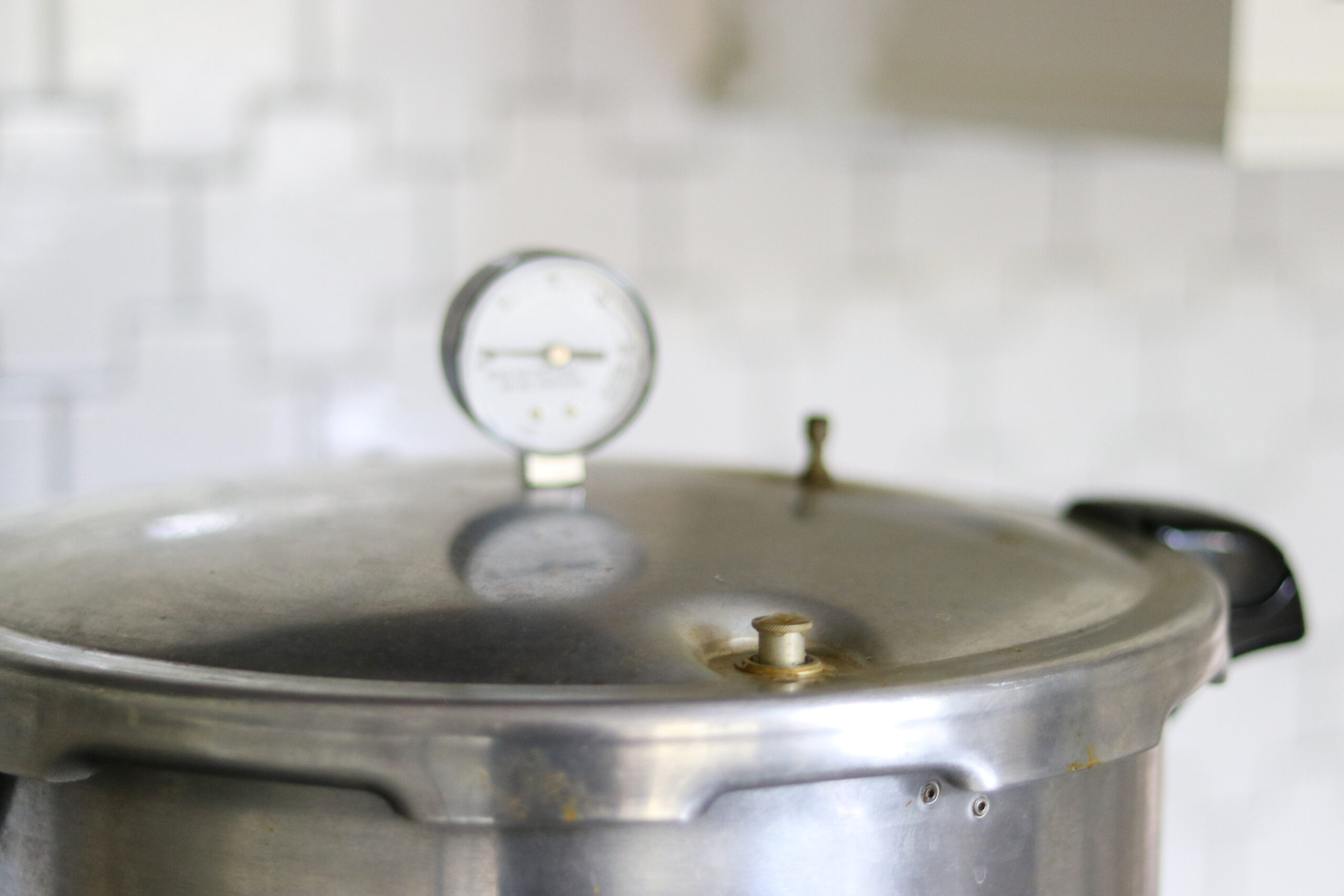
Basic Recipe for Canning Soup
While there are many tasty pressure-canning soup recipes to choose from, many people already have a favorite soup recipe from their family.
I’m often asked, “Can I pressure can my own soup?”
Surprisingly, the answer is you might be able to. Pressure canning is remarkably flexible as long as you follow specific rules. The National Center for Food Preservation has instructions for an adaptable soup recipe for pressure canning that allows you to use a wide range of ingredients.
However, all of the ingredients must be approved for canning, meaning they have already been tasted with their own specific canning instructions. For example, you can find approved instructions for canning beans and onions so they can be included in the recipe. However, there are no approved instructions for canning cabbage alone, so it shouldn’t be included.
Additionally, you cannot use starches, including thickeners, flour, rice, or pasta in your soup. You must also avoid using dairy products like milk, cream, and butter. Your soup must be comprised of beans, meat, vegetables, herbs, and seasonings.
However, it’s easy enough to add thickeners, pasta, dairy products, and similar ingredients later when you’re ready to eat.
To pressure can you own soup recipe, you can only fill the jars about halfway with solids. Start by preparing the meat and vegetables like you would for a hot pack, and then load them into prepared jars up to the halfway point. Fill the rest of the jar with broth, leaving about 1 inch of head space.
This ensures your soup isn’t too dense and allows the heat to distribute properly during the canning process.
Seal your filled jars with 2 part canning lids and process them in a pressure canner using the charts below.
If you’re using a dial gauge canner, such as a presto canner, here are the pressures for canning brothy soups:

When using a weighted gauge pressure canner (like an All American Brand Canner), you have a choice between 10 and 15 pounds, without weights in between. Here are the pressures you use for brothy soups in a weighted gauge canner:

This adaptable soup recipe is a great way to can your family favorites as long as you’re okay with them being half broth. Generally, I’ve found this works quite well for soups I’m going to thicken at serving time or any that I will be adding cooked pasta or rice to as I heat it to eat.
However, using a tested recipe, you can also avoid filling half the jar with broth. These will allow you to fill the jar with hearty soups and stews. Thankfully, plenty of these safe recipes exist, so you can find something to suit any family.
Broth and Stock Canning Recipes
Though they technically aren’t soup, I love canning stock and broth to keep in the pantry. They’re nourishing and an excellent base for homemade soups, allowing you to quickly use whatever ingredients you have on hand.
They’re also great because they have a quick processing time. There are no solids in the jar, which means the pressure canning time is much shorter.
- Canning Beef Broth
- Canning Bone Broth
- Canning Chicken Broth
- Canning Pork Stock
- Canning Vegetable Broth
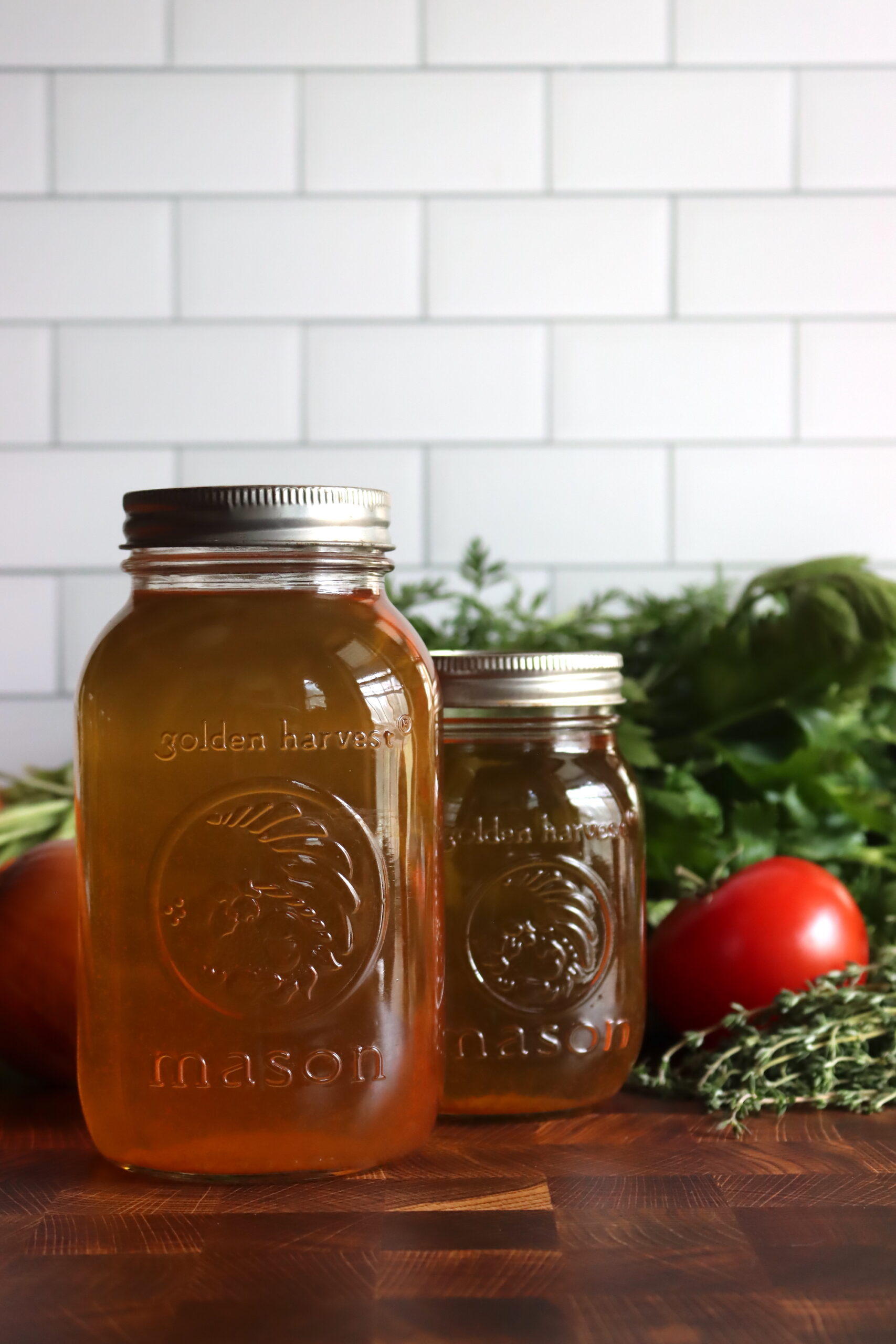
Vegetable Soup Canning Recipes
I also love pressure-canning vegetable soups. It’s so satisfying to turn summer garden produce into shelves of easy, comforting meals or sides for winter. Mixed vegetables canned in a vegetable or meat stock can be mixed with barley, rice, or pasta when you’re ready to eat or served alongside a sandwich for a filling, tasty meal.
If you don’t love pressure canning plain vegetables like jars of corn or green beans, this can be a great option where the stock and seasoning add a lot of flavor.
- Asparagus Soup
- Asparagus, Potato and Leek Soup
- Butternut Squash Soup
- Canning Mushroom Soup Base
- Carrot and Fennel Soup
- Curried Carrot and Ginger Soup
- Corn Chowder
- French Onion Soup
- Classic Vegetable Soup
- Potato Leek Soup
- Potato Soup
- Spicy Tomato Vegetable Soup
- Thai Coconut Squash Soup
- Roasted Tomato Basil Soup
- Tomato Soup Concentrate
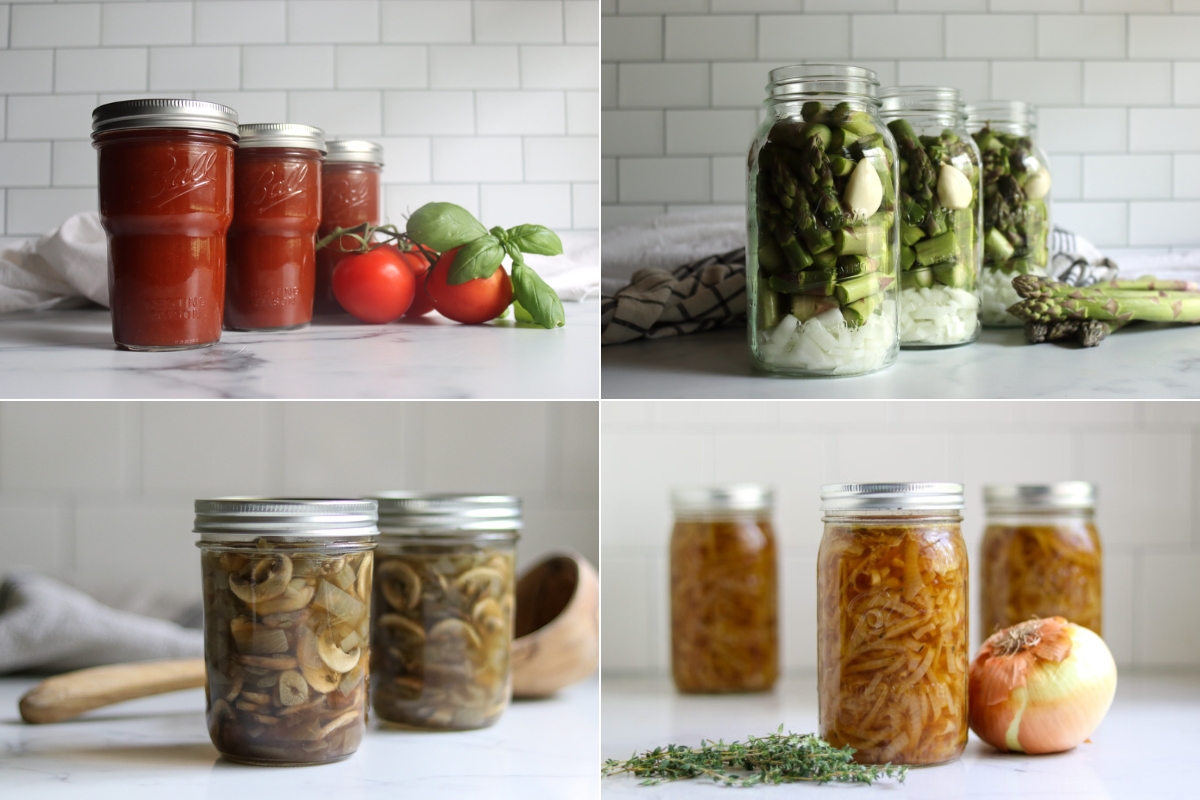
Bean and Pea Soup Canning Recipes
Bean and pea soups are a bit heartier and more filling than many of the vegetable options but are still incredibly affordable. These soups made with peas, beans, and other legumes are easy, healthy meals to fill the pantry.
Always use tested recipes for these types of soups and follow them carefully. Bean and pea soups are thicker, and density can be an issue in pressure canning. If your soup is too thick, the heat won’t correctly penetrate the jar, which is essential for safety.
- 16 Bean Soup
- Chipotle Black Bean Soup
- Cuban Black Bean Soup
- Bean & Ham Soup
- Butternut Squash and White Bean Soup
- Lentil Soup
- Rosemary White Bean Soup Starter
- Split Pea Soup
- Fasolada (Greek Tomato Bean Soup)
- French Market Soup
- Taco Soup
- White Bean and Kale Soup
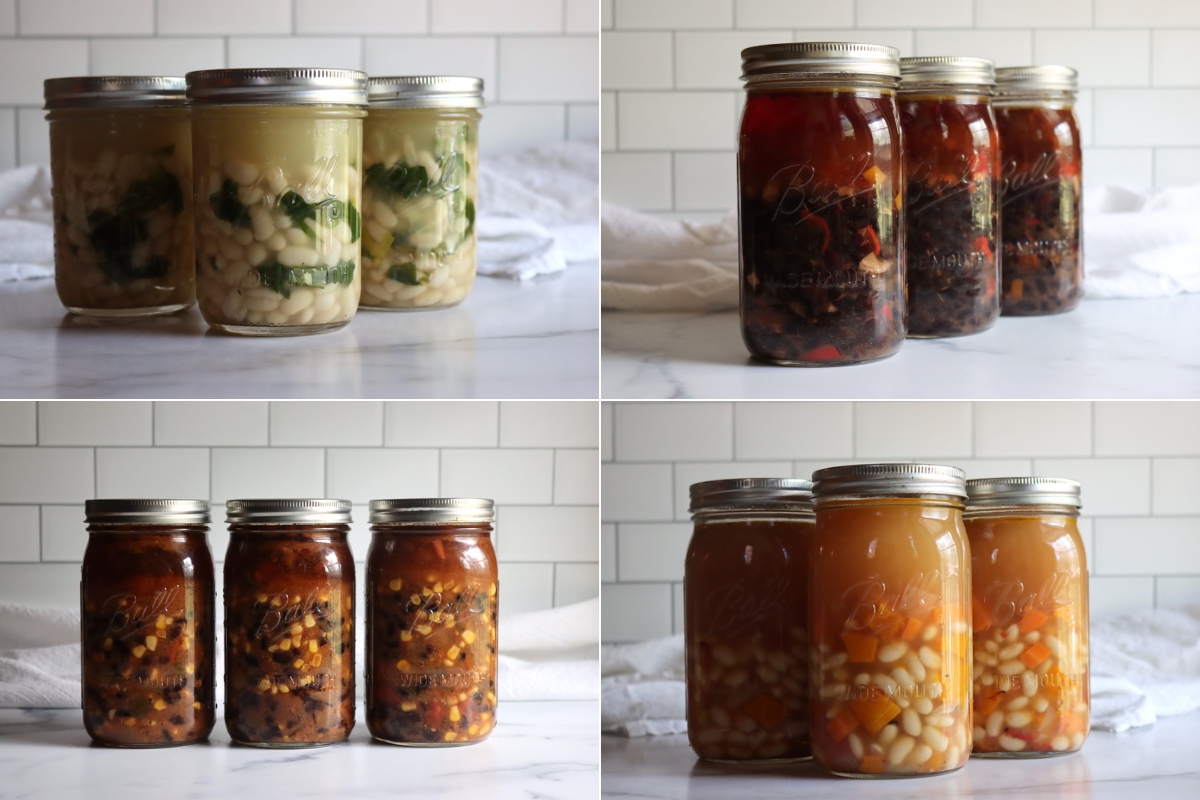
Beef Stew and Beef Soup Canning Recipes
Few recipes offer comfort, like classic beef stew. It’s one of my favorite winter foods, and having it ready in a can makes it a perfect weeknight meal or lunch on a busy workday. You can make other combinations with different vegetables, like green beans or peas. Wine sauce is another great way to change things up.
Ground beef is also safe for canning and works well in various fun soups like hamburger or stuffed pepper soup that are flavorful, economical, and filling. Ground beef can also be made into meatballs for classics like Italian meatball soup.
- Classic Beef Stew
- Beef in Wine Sauce
- Hamburger Soup
- Hamburger Vegetable Soup
- Sopa de Albóndigas (Mexican Ground Beef Soup)
- Steak and Ale Soup
- Italian Meatball Soup
- Stuffed Pepper Soup
- Vegetable Beef Stew

Chicken & Turkey Soup Canning Recipes
When anyone in our family feels under the weather, classic chicken soup is our go-to. Thankfully, pressure canning means we have some ready to go, and I don’t have to spend a sick day in the kitchen.
Most people like to add rice, dumplings, or pasta to their chicken soup. I enjoy egg noodles in mine. Unfortunately, these ingredients are unsafe for canning and would get soggy anyway.
Thankfully, these are all fairly easy to add at serving time. I put my noodles on to cook as I start heating up the soup. Then, I combine them when I’m ready to eat.
I also make various other chicken or turkey soup recipes that are great for winter lunches. If your homestead processes chickens or turkeys or you find a good source on sale, these recipes, like southwestern chicken and turkey chili soup, are wonderful, flavorful ways to preserve any abundance.
- Classic Chicken Soup
- Chicken & Corn Chowder
- Chicken Tortilla Soup
- Chicken Vegetable Soup
- Mexican Chicken Soup
- Roasted Red Pepper and Chicken Soup
- Southwestern Chicken Soup
- Turkey Chili Soup
- Turkey and Vegetable Soup
- Hearty Chicken Soup (Chicken pot pie filling without the pot pie)
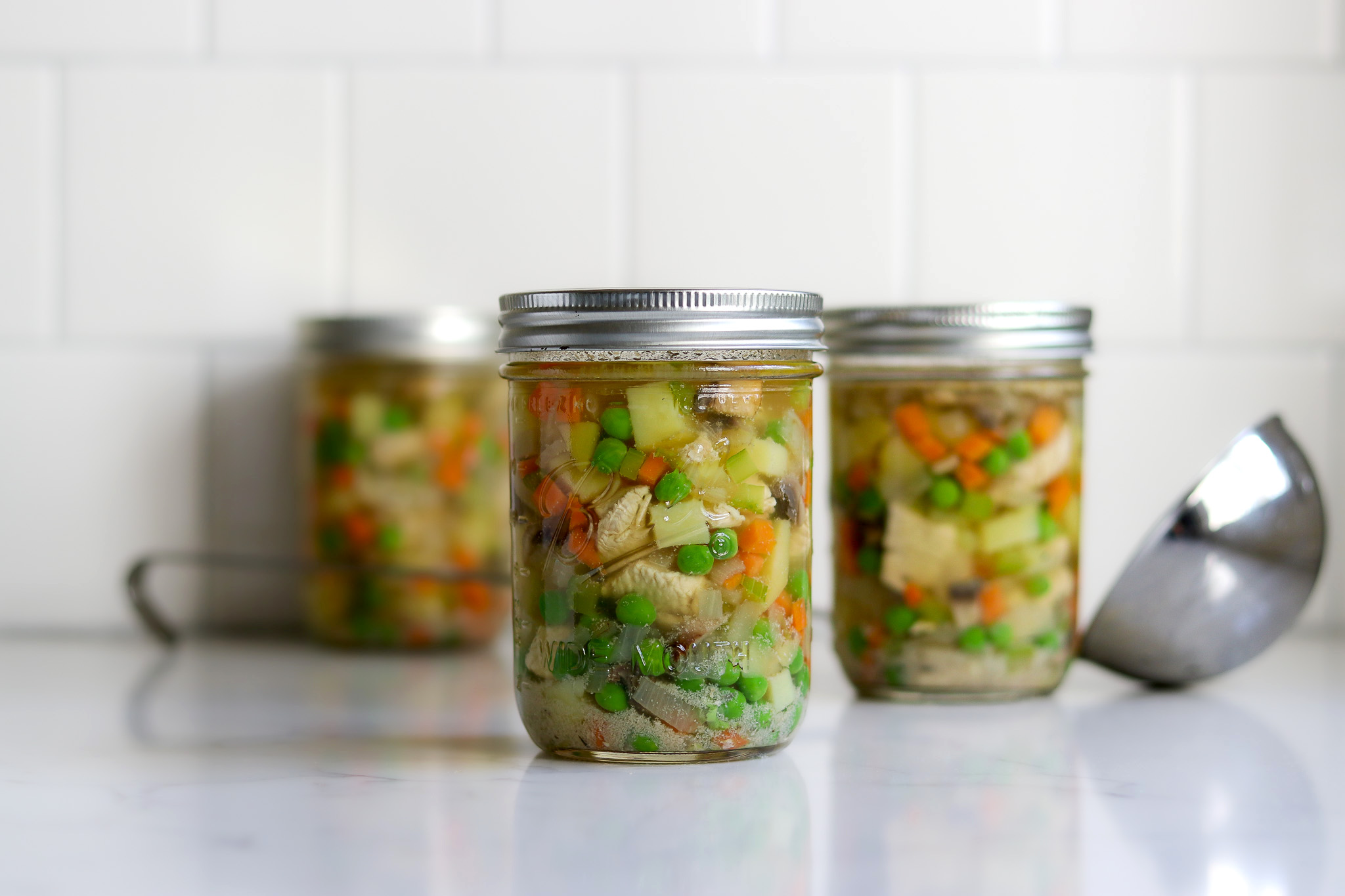
Seafood Soup Canning Recipes
This category is one that people either love or hate. If you’re lucky enough to live near a coast or other water body for fishing, you may want to put up part of your harvest as soup or stew.
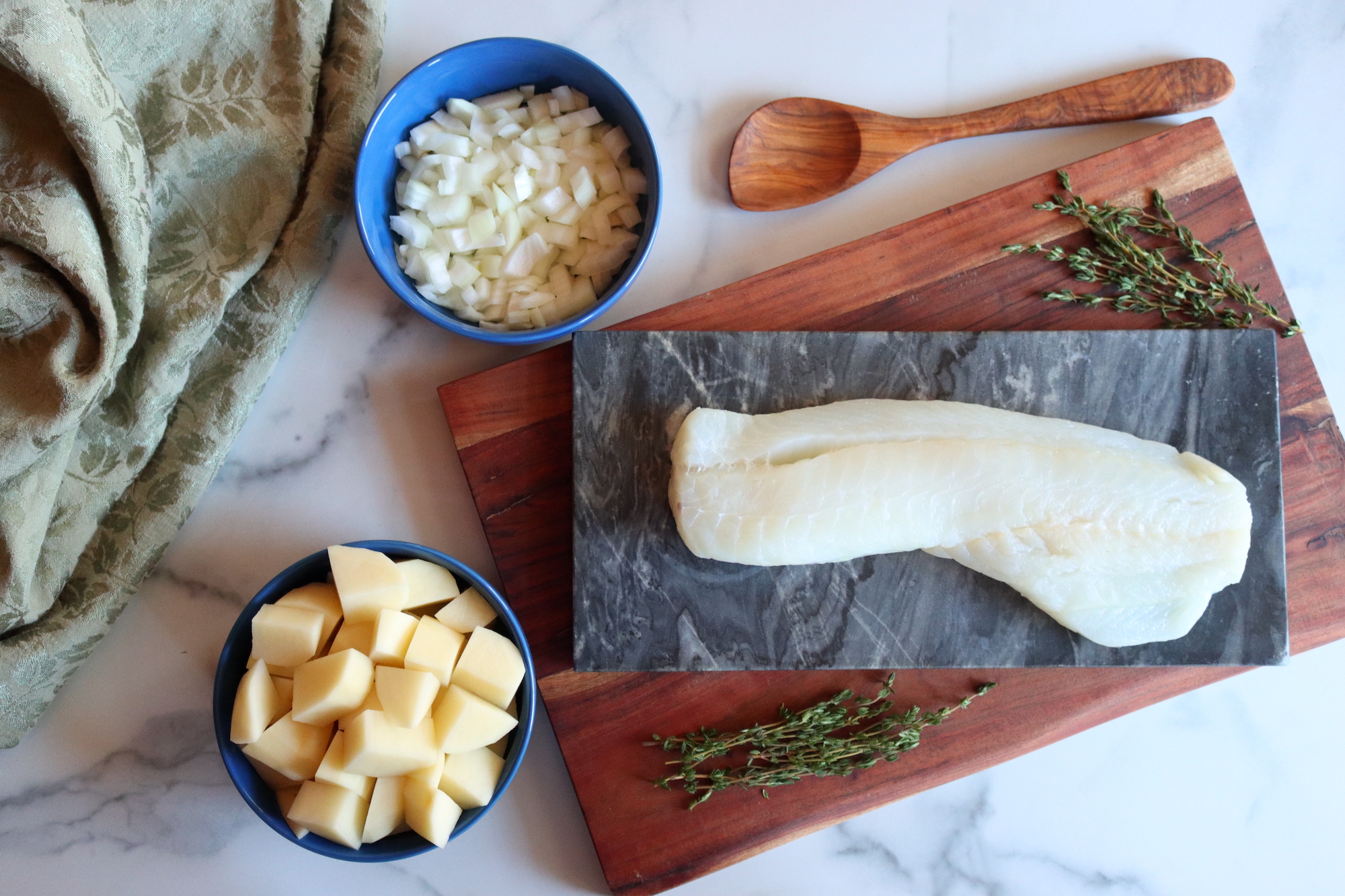
Pork and Sausage Soup Canning Recipes
I’ve found that few people can with pork, which is a real shame. Fresh pork and sausage in patties, links, or crumbles are all safe for canning and great for creating rich recipes.
Don’t substitute cured meat like bacon or ham in a recipe that calls for fresh pork or sausage. Cured meat is denser and doesn’t heat as well, so it may affect the safety of the final product. Cured meat is only approved for canning in specific recipes, which typically contain very small amounts for flavoring, like the ham and bean soup below.
- 15 Bean & Ham Soup
- Ham and Bean Soup
- Navy Bean & Bacon Soup
- Pork and Sausage Stew
- Sausage and Bean Soup
- Sausage, Potato, and Kale Soup
- Split Pea Soup with Ham
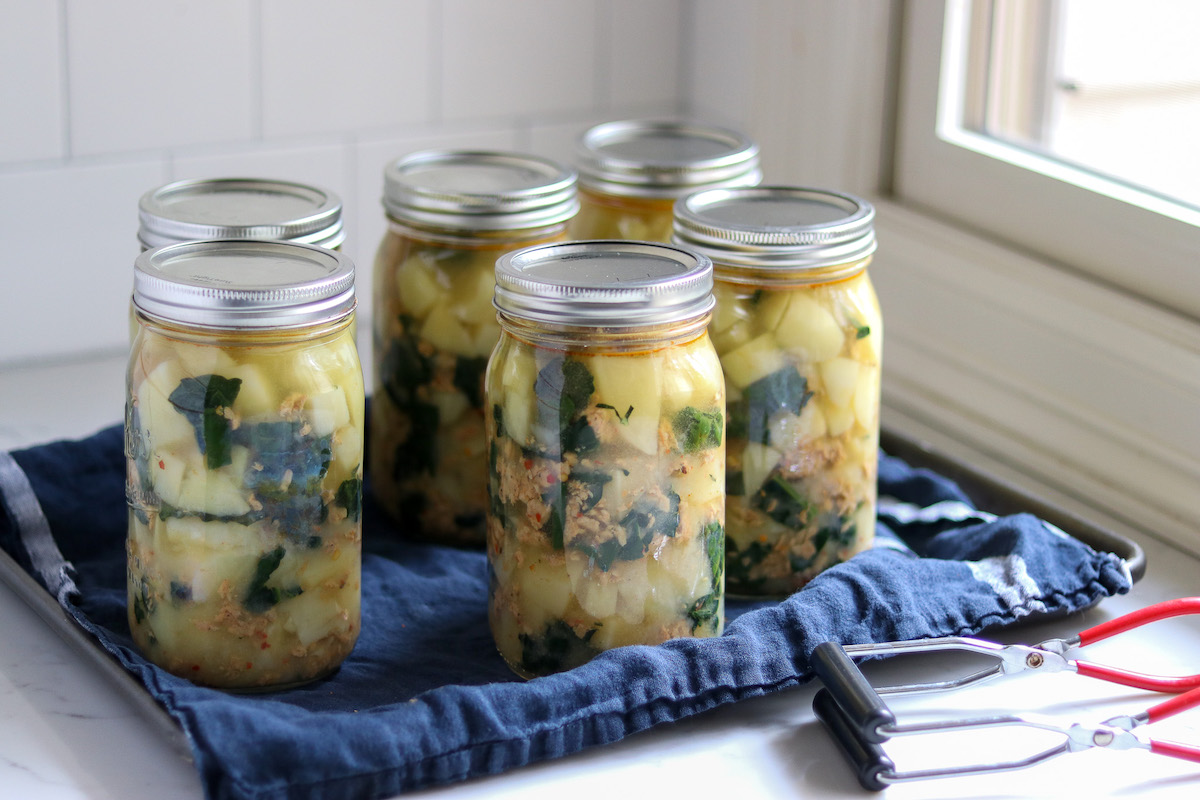
Wild Game Soup Canning Recipes
One of the biggest challenges of hunting is always finding efficient ways to process and preserve the harvest. Canning is one of my favorite ways to use wild game as it gives us some pre-prepared meals and doesn’t take up freezer space – essential in areas with frequent power outages.
I pressure can some of our wild game in chunks or ground for use in various recipes. However, I also love to can some as soup, which allows anyone in the family to have a ready-to-use meal with little effort.
Unfortunately, most canning publications don’t seem to share my enthusiasm. I’ve found a few venison canning recipes, but in general, there are a few wild game soup recipes designed for canning.
Thankfully, they’re easy enough to substitute for similar meats using recipes in the other categories. Try using venison, elk, bear, or moose in any of the above beef recipes. You can also use squirrel, rabbit, and duck as substitutes for chicken canning recipes.
Here are the recipes I have found that are specifically designed for wild game:
Meal in a Jar Canning Recipes
As I dug into creating this list, it was difficult to decide what constituted a “soup.” Does stew count? What about chili?
As I wanted to provide as many options as possible, I decided to include these tasty meal-in-a-jar recipes like Thai curry and chili con carne. While not technically soup, all of these can be heated and eaten in a bowl like soup.
I also included a couple, like a rosemary chicken, which are easy to use as a base for creating a quick homemade soup. Toss the chicken into some stock with a few vegetables, and you have a meal!
Beef Meals in a Jar
- Beef Burgundy (Julia Child’s Recipe)
- Beef Pot Roast in a Jar
- Beef Stroganoff
- Beef Tips and Gravy
- Chili Con Carne
- Meatballs in Tomato Juice
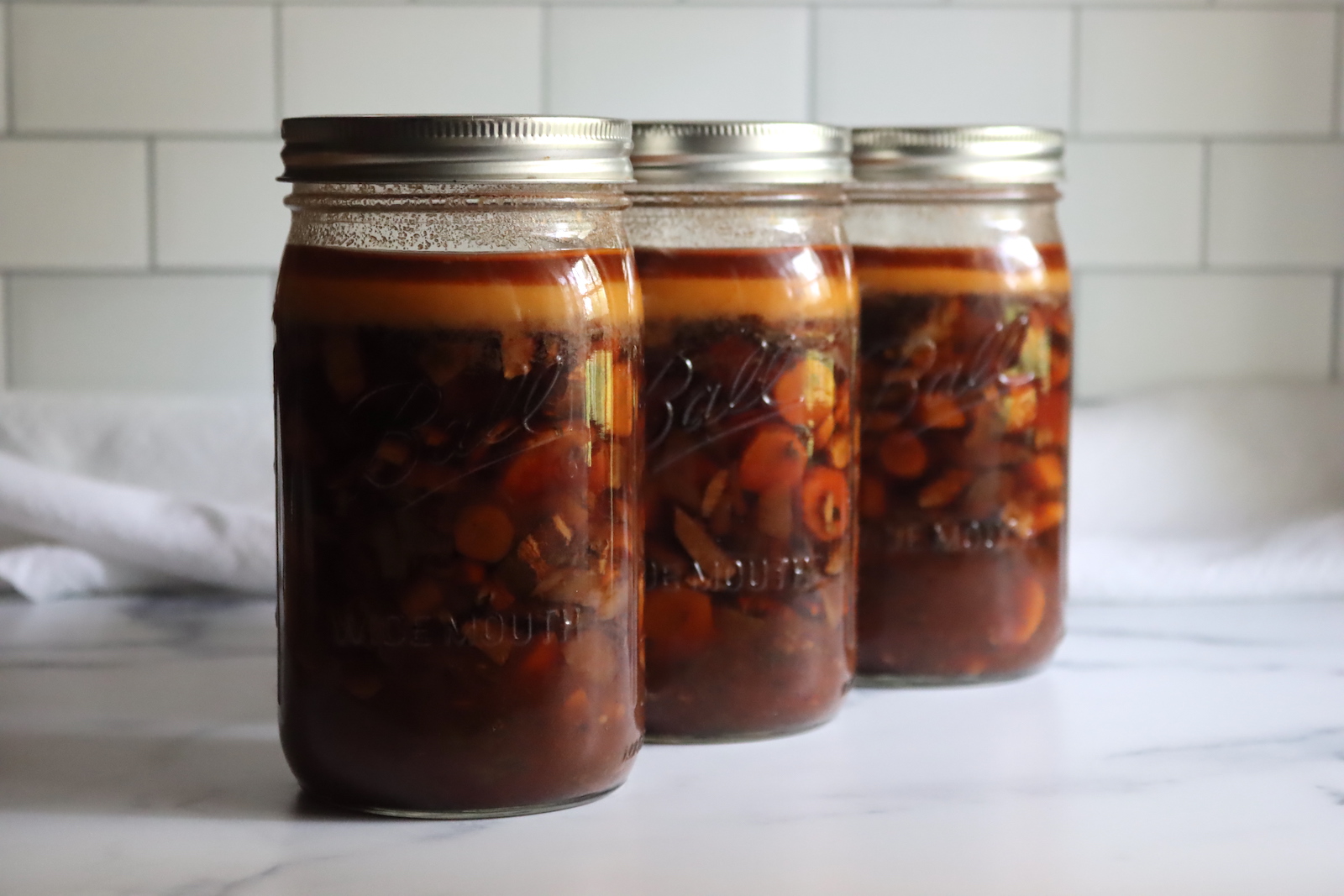
Chicken Meals in a Jar
- Canning Chicken
- Canning Thai Red Duck Curry (or Chicken)
- Chicken Chili Verde
- Chicken and Gravy Dinner in a Jar
- Chicken Pot Pie Filling
- Rosemary Chicken
- White Chicken Chili
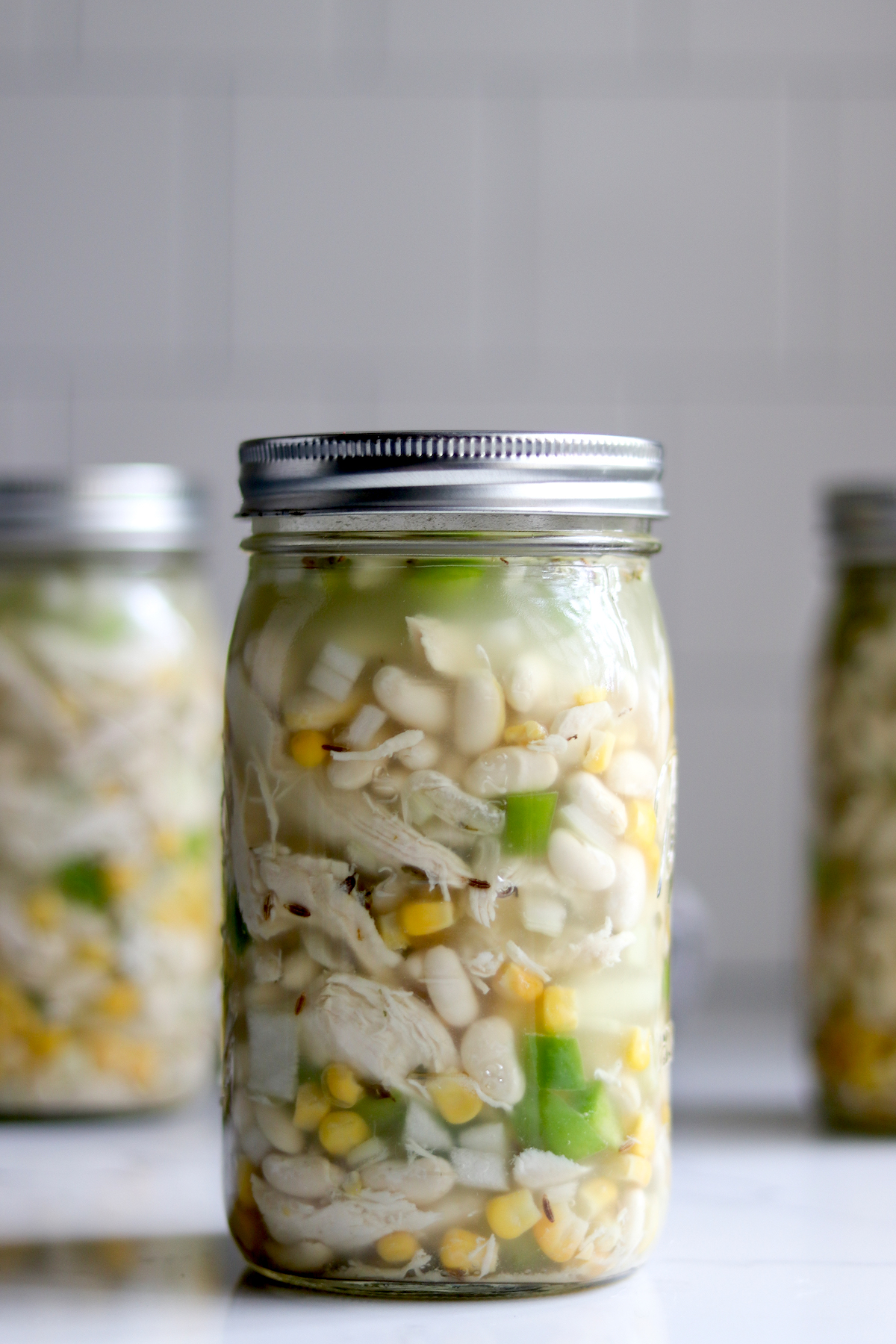
Pressure Canning Books
Usually, I can find any recipe I want on the internet. There are thousands of bloggers and YouTubers sharing their recipes and knowledge from around the world. Oddly, canning recipes are one of the few things I sometimes still have to dig through books for.
If you didn’t find the soup recipe you were hoping for, don’t worry. There are dozens of soup canning recipes that are only in books.
Here are some of my favorite pressure canning books. Each one of these can help you get started with pressure canning and offers a few tasty soup recipes:
- Pressure Canning for Beginners and Beyond by Angi Schneider
- The Complete Guide to Pressure Canning by Diane Devereaux
- The Ball Complete Book of Home Preserving by Judy Kingry & Laura Devine
- So Easy to Preserve by The Georgia University Extension
- The Complete Guide to Home Canning by The US Department of Agriculture
Food Preservation Tutorials
I love canning, but there are many ways to safely preserve food including vegetables, fruits, and meats at home. Get started putting up your harvest with these other guides.
- Beginners Guide to Lacto-Fermentation
- Beginners Guide to Rootcellaring
- How to Freeze Dry Food at Home
- Freezing Vegetables (A to Z Guide)
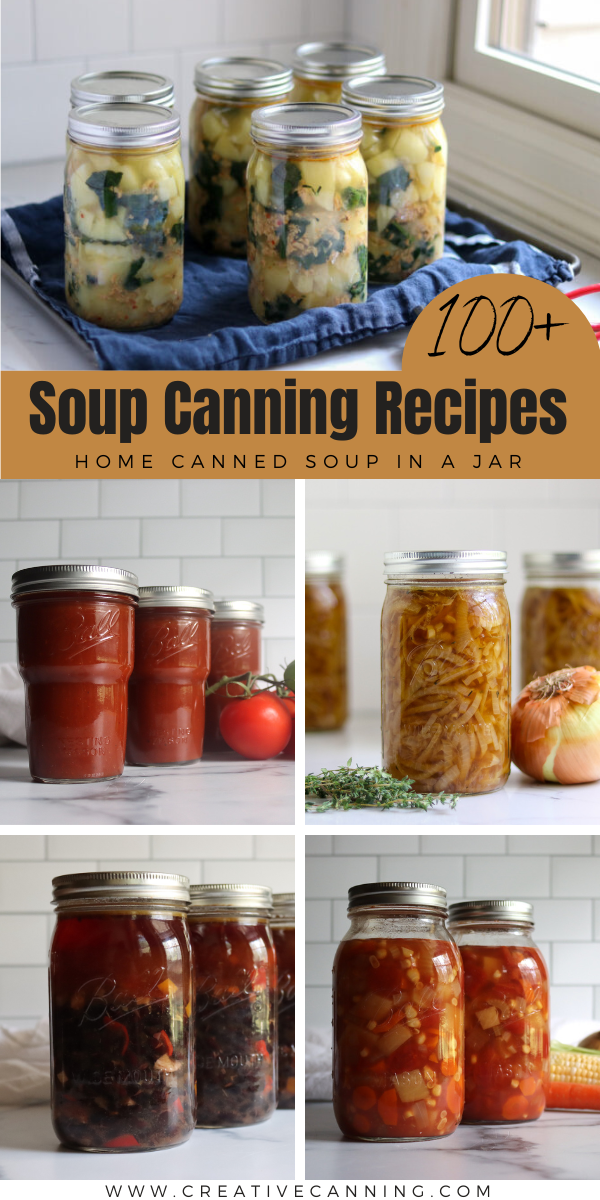
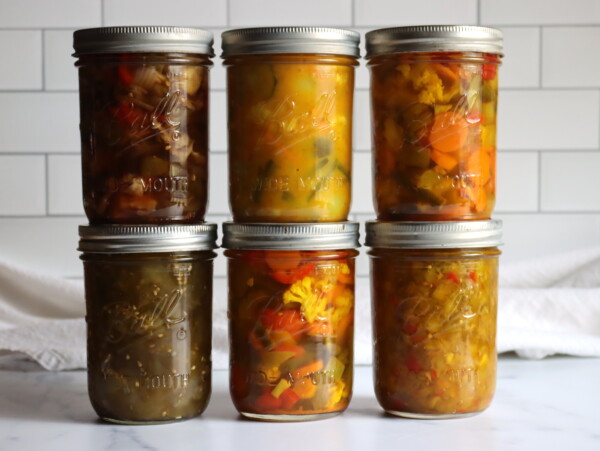
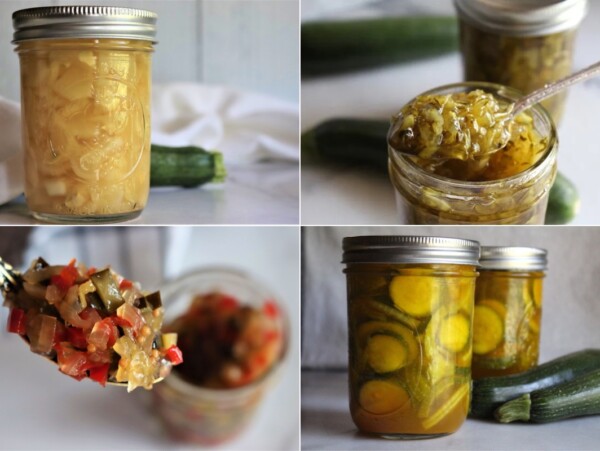
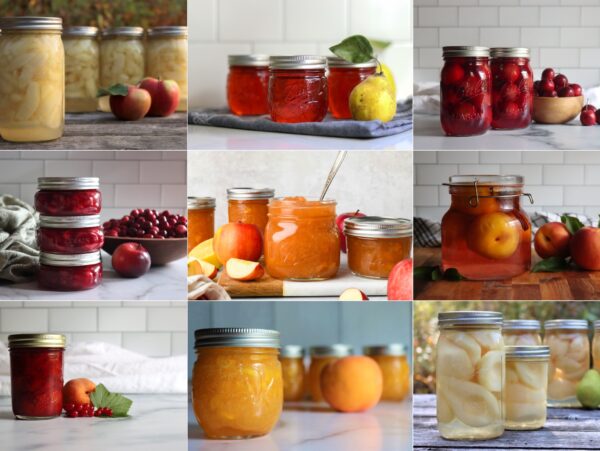

Oh my !!!! This is the most amazing website I have ever come across. There is SOOOO much content, all set out in an orderly manner, which detailed instructions, tips and tricks, and especially safety must do’s and dont’s.
I could, and I have spent many hours going through all the sections, recipes etc. Now, it’s I actually start my canning journey.
Thank you for all your amazing effort in putting this together.
I’m so glad it’s helpful to you. Enjoy canning! It’s so much fun when you really get into it =)